Climate change: Big increase in weather disasters over the past five decades
- Published
- comments
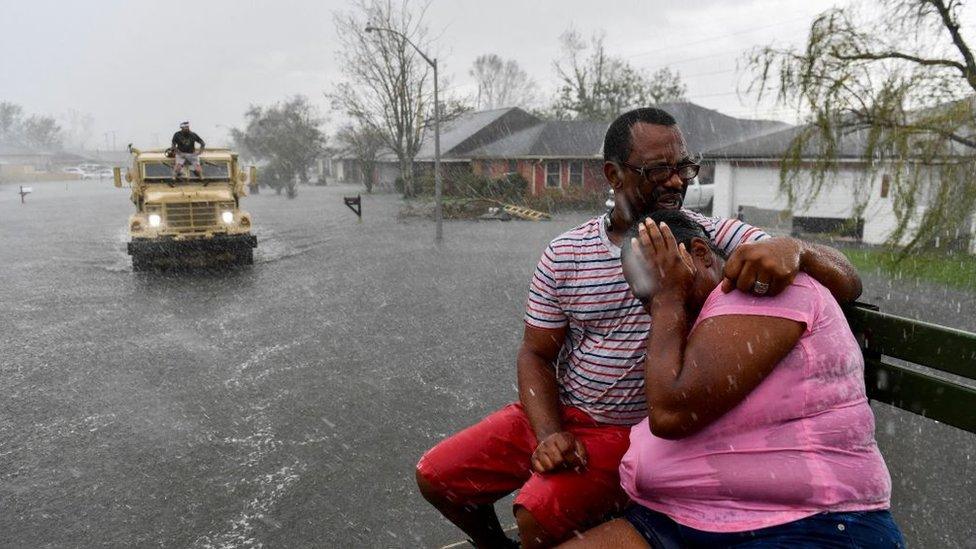
The number of weather-related disasters to hit the world has increased five-fold over the past 50 years, says the World Meteorological Organization.
However, the number of deaths because of the greater number of storms, floods and droughts has fallen sharply.
Scientists say that climate change, more extreme weather and better reporting are behind the rise in these extreme events.
But improvements to warning systems have helped limit the number of deaths.
As global temperatures have risen in recent decades, there has been a significant uptick in the number of disasters related to weather and water extremes.
In the 50 years between 1970 and 2019, there were more than 11,000 such disasters, according to a new atlas, external from the WMO that charts the scale of these events.
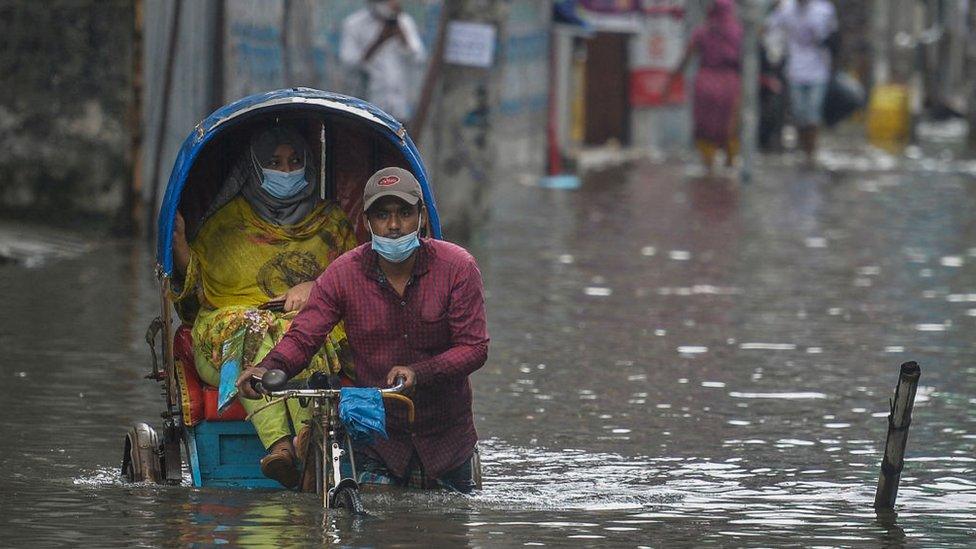
Flooding in Bangladesh has taken a huge toll in lives and economic damage over recent decades
Over two million people died as a result of these hazards, with economic losses amounting to $3.64 trillion.
"The number of weather, climate and water extremes are increasing and will become more frequent and severe in many parts of the world as a result of climate change," said WMO Secretary-General Prof Petteri Taalas.
"That means more heatwaves, drought and forest fires such as those we have observed recently in Europe and North America. We have more water vapour in the atmosphere, which is exacerbating extreme rainfall and deadly flooding. The warming of the oceans has affected the frequency and area of existence of the most intense tropical storms," he added.
More than 90% of the deaths related to weather disasters have occurred in developing countries.
The biggest killers have been droughts, responsible for 650,000 deaths; while at the other end of the scale, extreme temperatures took nearly 56,000 lives.
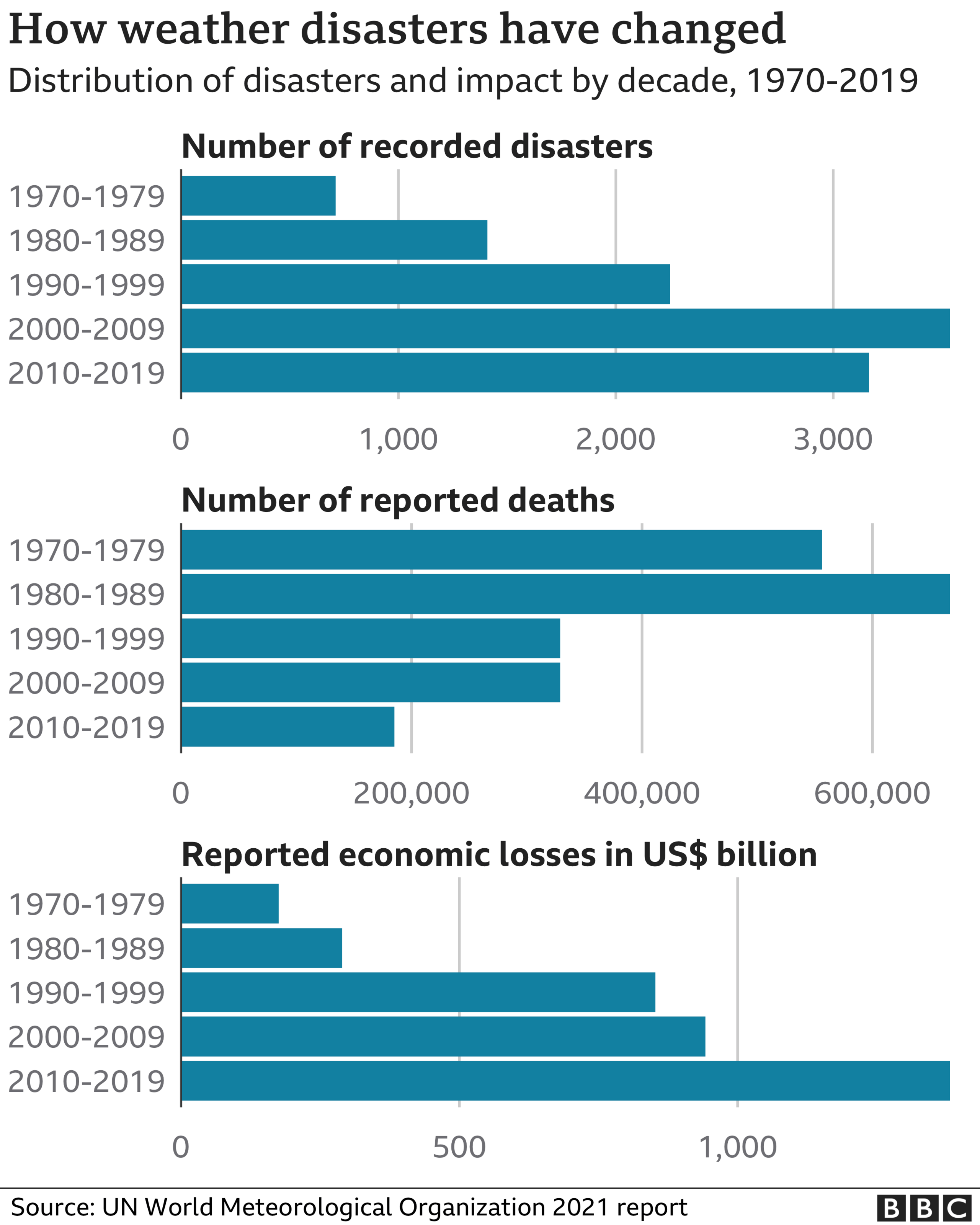
But over the 50-year period, the overall death toll from disasters fell rapidly.
"Behind the stark statistics lies a message of hope," said Prof Taalas.
"Improved multi-hazard early warning systems have led to a significant reduction in mortality. Quite simply, we are better than ever before at saving lives."
While more people have been saved in the face of an increasing number of extremes, the economic toll has mounted.
Reported losses in the decade between 2010-2019 were around $383m per day, a seven-fold increase on the $49m per day between 1970-1979.
2017: A costly year
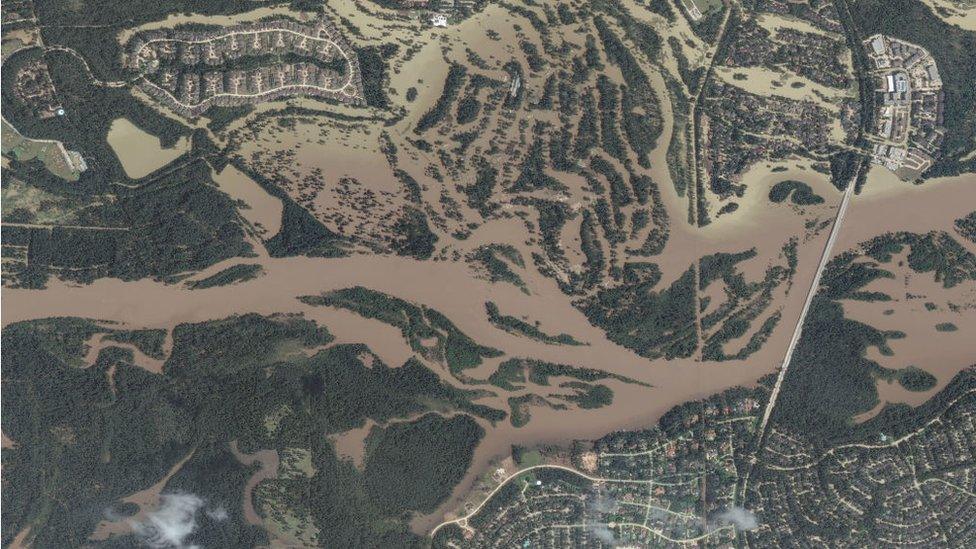
The town of Kingswood in Texas was hit badly by Hurricane Harvey in 2017
Three of the extreme events with the biggest financial impact all occurred in the same year - 2017. It saw Hurricanes Harvey, Maria and Irma hit the US. Taken together, the economic impact of the three accounted for 35% of the total losses from the top 10 disasters between 1970 and 2019.
The atlas points out that, while improvements in warning systems are helping to save lives, there is much more work to be done.
Only half of the 193 countries that are members of the WMO have multi-hazard early warning systems in place.
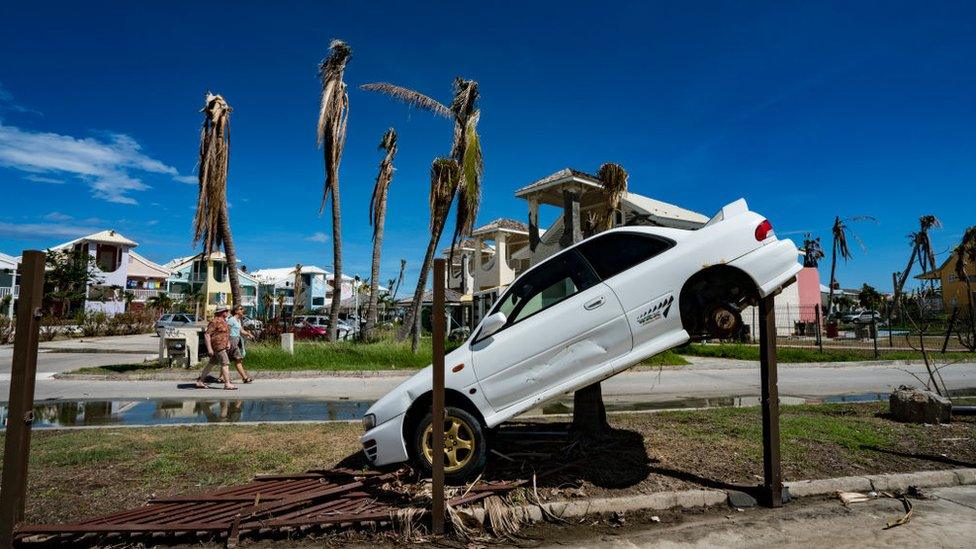
The aftermath of Hurricane Irma, which brought devastation to parts of the Caribbean and the US in 2017
There are also huge gaps in weather and hydrological observing networks in Africa, some parts of Latin America and among island states in the Pacific and Caribbean.
"More lives are being saved thanks to early warning systems but it is also true that the number of people exposed to disaster risk is increasing due to population growth in hazard-exposed areas and the growing intensity and frequency of weather events," said Mami Mizutori, special representative of the UN's Secretary-General for Disaster Risk Reduction.
"More international cooperation is needed to tackle the chronic problem of huge numbers of people being displaced each year by floods, storms and drought.
"We need greater investment in comprehensive disaster risk management, ensuring that climate change adaptation is integrated in national and local disaster risk-reduction strategies," she said.
Follow Matt on Twitter., external